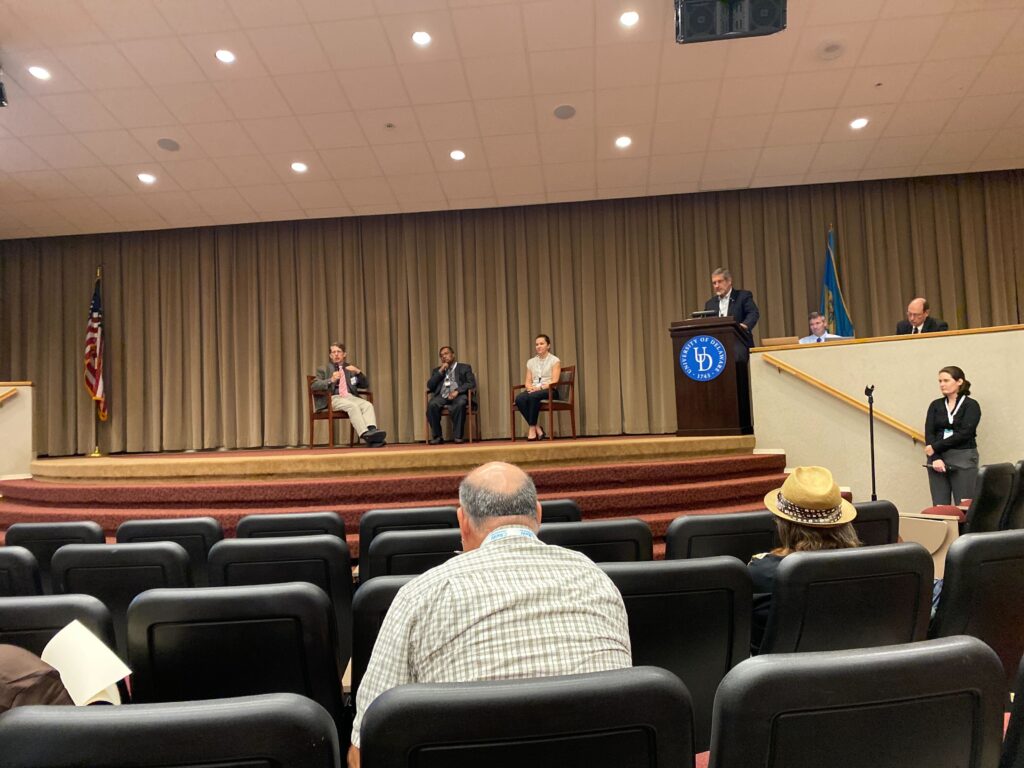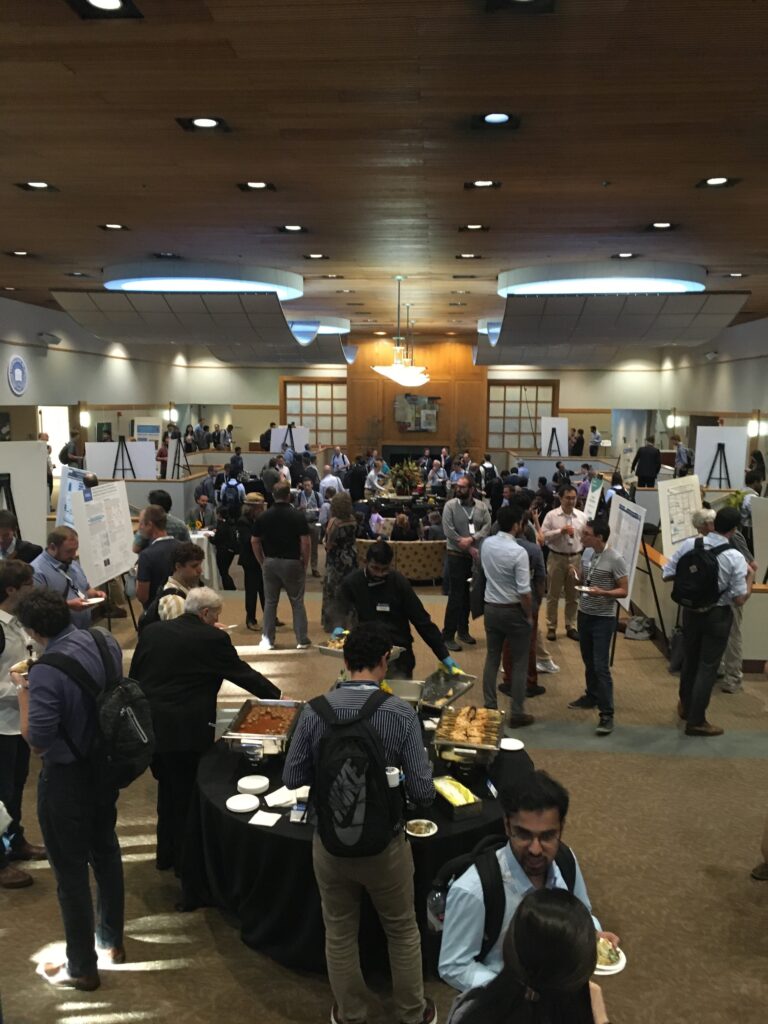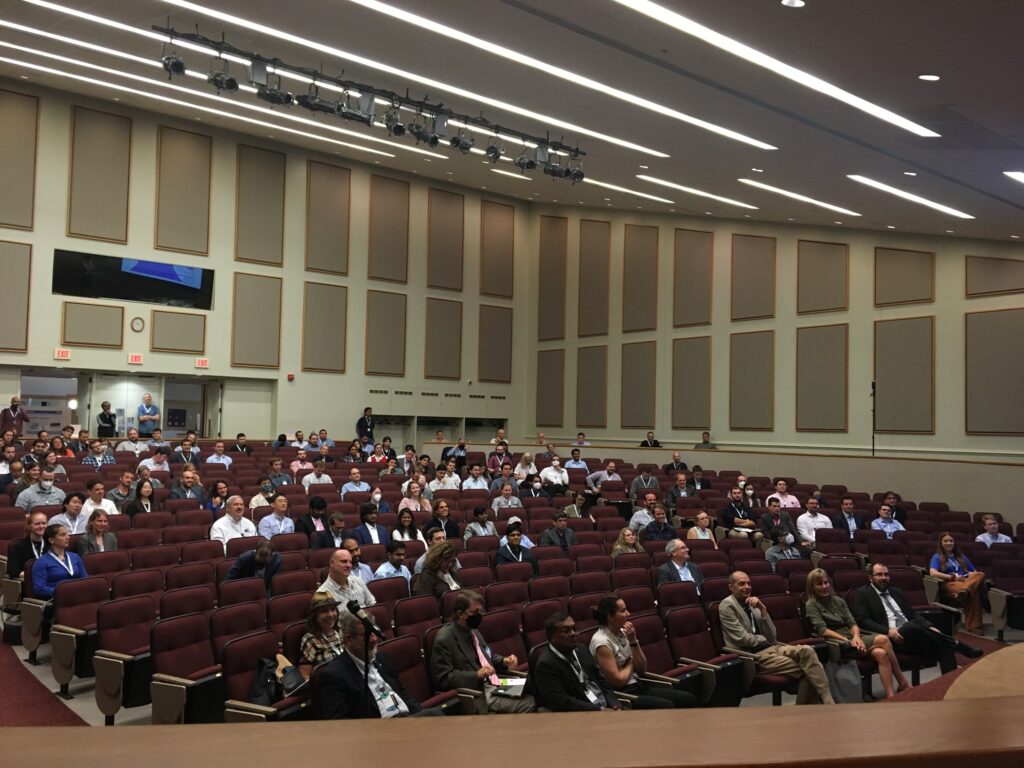The Ralph O’Connor Sustainable Energy Institute (ROSEI) and Johns Hopkins University had a sizable contingent at the North American Wind Energy Academy (NAWEA) 2022 WindTech Conference.
ROSEI leadership council member Ben Hobbs and associated researcher Charles Meneveau both gave plenary talks, while ROSEI Director Ben Schafer also presented. Alums and current students of Meneveau and ROSEI leadership council member Dennice Gayme also spoke, as well as a graduate student from Northeastern that spoke about a joint JHU-Northeastern-Vestas NSF project.
See below to read what each person associated with Hopkins discussed.
Hobbs: Focused on “Market design consideration for future systems with a high share of renewable energy.”
Today’s power market designs were fashioned primarily for systems with dispatchable, non-storable generation – are those designs “fit for purpose” for tomorrow systems dominated by wind, solar, and battery resources? Although many of the fundamental principles will still apply in the future, there are several reforms that will be critical if we want to get the full economic and emissions reduction benefits of renewables, while keeping the lights on.
Meneveau: Spoke multiple times at the conference about a variety of topics that have been presented in papers. Those topics included:
- An analytical model to predict the shape of curled wakes, which was created by the need for compact descriptions of the evolution of non-classical wakes behind yawed wind turbines.
- That continued innovation is needed to realize the potential of wind to serve the global demand for clean energy, outlining three different potential methods for doing so.
- The need for a deeper understanding of the physics of atmospheric flow in the critical zone of plant operation.
- The science and engineering of the largest dynamic, rotating machines (wind turbines) in the world.
- Optimization and control of fleets of wind plants working synergistically within the electricity grid.
- The key questions that need to be asked about wind turbines, windfarms and atmospheric turbulence interactions to design better windfarms and more reliably predict their production potential for their lifetime operation.
- These questions touch upon the need for better analytical, synthetic and reduced order models of turbulence, better model coupling methods and basic understanding offlow phenomena governing kinetic energy entrainment and limiting power densities
Schafer: Spoke about the stability assessment of wind turbine towers, and introduced a new analytical tool developed in conjunction with ROSEI Visiting Faculty member Sandor Adany to expediently generate the buckling mode of tower segments under any applied load. The tool is being developed as an open source resource to assist tower engineers in the future.
Genevieve Starke PhD ’22: Starke, who pursued windfarm modeling and control research with Gayme and Meneveau while at Hopkins and is now a postdoctoral Researcher at the National Renewable Energy Laboratory, also presented at the conference. Her work focused on a graph-based dynamic yaw model to predict the dynamic response of the hub-height velocities and the power in a windfarm. The model builds on previous work where the turbines define the nodes of the graph and the edges represent the interactions between turbines. This model uses a novel analytical description of how the wake of a wind turbine changes with yaw is applied and a more accurate representation of the inter-turbine travel time of wakes. The model is validated both statically and dynamically using high fidelity simulations. In the applications, the model is adjusted to be able to incorporate measurements from high fidelity simulations that would also be available in an operating windfarm. These measurements enable the model to follow windfarm power in changing conditions. The final application of the model incorporates the model into an optimal control loop to control the farm power output using yaw actions.”
Ghanesh Narasimhan: Narasimhan, a PhD student who works jointly in Gayme’s and Meneveau’s labs, also discussed the work found in his paper, which is titled “Modeling wind veer effects on a yawed wind turbine wake in conventionally neutral and stably stratified atmospheric boundary layers.” Below is the abstract for the paper.
In an Atmospheric Boundary Layer (ABL), the Coriolis force resulting from the Earth’s rotation turns the wind direction near the surface by inducing a velocity in the lateral direction called wind veer. A turbine placed in the ABL, therefore, encounters an incoming wind that has both streamwise and spanwise velocity components. The veer affects the downstream evolution of the wake by shearing the wake structure in the lateral direction. The shear rate of the veer depends on the atmospheric stability conditions. Previous studies have proposed analytical models for yawed wind turbine wakes that are applicable only in a truly neutral ABL (TNBL) where wind veer effects are not included. It is of interest to develop an analytical model for the incoming wind velocity profiles under different stability conditions that can be incorporated into wake models. To facilitate such developments, and to understand how atmospheric stability affects wind veer, we perform Large Eddy Simulations (LES) of conventionally neutral (CNBL) and stably stratified (SBL) ABLs. The results confirm that the SBL induces a stronger wind veer than a CNBL and that the wake behind the turbine in an SBL is sheared much more severely than that in a CNBL. We then derive the needed simplified models for the mean wind velocity profiles based on mean momentum equations and a simple mixing length closure. We incorporate this wind veer model into a wake model and compare the results against LES.
Dehui Lin: Lin, a graduate student from Northeastern University, represented a joint JHU-Northeastern-Vestas NSF project and spoke about high precision 3D laser scanning she performed on newly manufactured wind turbine towers to assess imperfection sensitivity and the potential to create more efficient future towers.
Please note: Bottom three photos in the gallery are courtesy of Cristina L. Archer.
- Ben Hobbs delivering his plenary talk
- Ben Hobbs participating in a panel
- Ben Schafer presenting





